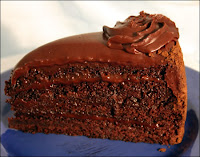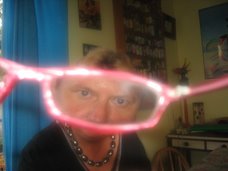Darker side of chocolate
 By VIRGINIA WINDER
By VIRGINIA WINDER
THE mood-boosting properties of chocolate aren’t as uplifting as we hoped.
Three scientists from the Black Dog Institute in Australia have studied theories about the sweet treat and found them wanting.
Professor Gordon Parker (pictured), Isabella Parker and Heather Brotchie have not only found chocolate is no quick fix for depression; it could possibly make it worse. The trio explored the theories that the dark-brown confectionary corrects a deficiency in the regulation of mood, that it corrects an imbalance in the diet, is addictive, is highly pleasurable and is a means of coping during a negative mood.
The trio explored the theories that the dark-brown confectionary corrects a deficiency in the regulation of mood, that it corrects an imbalance in the diet, is addictive, is highly pleasurable and is a means of coping during a negative mood.
“Each of these theories is examined and – with the exception of the pleasurable effects of chocolate – all are found to lack substance,” they say in a research paper.
People who suffer from depression lack the neurotransmitter serotonin, but there is no evidence this is boosted by eating chocolate.
Instead, the chemical dopamine, which supports the positive reward system, including the anticipation of pleasure, is possibly activated by chocolate.
On the definitive front, the central OPOID system, which activates the sense of pleasure, is triggered by chocolate.
Their findings are simple, and sound like an advert for a confectionary company: “…chocolate is craved because of its unique sensory attributes, and eating chocolate is the only way to satisfy that craving.”
But they don’t think that “craving” qualifies as an addiction, and say that scientists the world over cannot agree on whether chocolate, or any other food, can be addictive.
People suffering from negative moods, or depression, crave carbohydrates (or sugars), not necessarily chocolate.
The Black Dog Institute scientists found that down or depressed people reach for junk food, but when they feel great tend to prefer healthy foods. 
But the bad news is studies reveal that depressed people, who consume chocolate or other carbohydrates looking for a quick mood fix, actually end up going down.
While they might get temporary relief, it doesn’t last.
Carbohydrate consumption causes reduced energy levels in the longer-term and helps develop and maintain the depression.
“Furthermore, other studies have shown that resisting the craving produces a more positive emotional mood both in the short and long term,” the scientists say.
“Overall, emotional eating has not been found to have any real or lasting benefit upon a negative mood and in fact repeated emotional eating may in fact contribute to a negative mood.”















